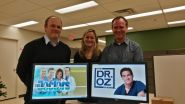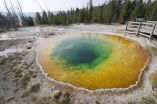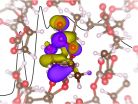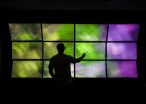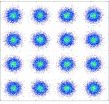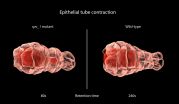(Press-News.org) (Edmonton) For millions of people around the world, televised medical talk shows have become a daily viewing ritual. Programs such as The Dr. Oz Show and The Doctors have attracted massive followings as charismatic hosts discuss new medical research and therapies while offering viewers their own recommendations for better health. For show producers it's a winning ratings formula, but for viewers eager for a healthier life, the results aren't so clear cut.
"The research supporting any of these recommendations is frequently absent, contradictory or of poor quality," says Christina Korownyk, an associate professor in the Department of Family Medicine in the University of Alberta's Faculty of Medicine & Dentistry.
"The public may see these shows as educational," adds Mike Allan, a colleague and fellow professor in the Department of Family Medicine. "But in many ways we wonder if that's really what they're there for and perhaps they're just there for entertainment."
Korownyk and Allan are two of the authors of a new study published in the Christmas edition of the British Medical Journal, which examines the recommendations of televised medical talk shows. The researchers say they settled on the study after hearing concerns from several physicians whose patients took to heart the advice given on the shows.
"Some patients come in and say 'I heard on Dr. Oz yesterday that we should all be doing this.' And then we're left scrambling in our office to try to find answers," says Korownyk. "It got us reflecting, what's being said there? What kinds of things are being recommended and what kind of information is being provided?"
To find an answer, the team chose two internationally syndicated medical talk shows to analyze: The Dr. Oz Show and The Doctors. Each show was recorded every day from January 2013 to April 2013. From there, the researchers randomly selected 40 episodes of each show and had two team members watch every episode independently, recording topics, recommendations made and who was making the recommendations. After that, another two researchers were brought in to re-watch the episodes, focusing on the information provided in the recommendations and answering the questions: was there a benefit mentioned? Was it specific? Did the show quantify the magnitude of the benefit? Did they mention costs? Did they mention conflict of interest?
The team then randomly selected 80 of the strongest recommendations from each show for further study, giving the medical researchers an hour per question to try and find out if there was any evidence to support what was being said. Korownyk says the results were revealing.
"One out of three recommendations from The Dr. Oz Show has believable evidence and about half of the recommendations on The Doctors has believable evidence."
"Frequently you're not getting enough information and without doing the research you won't know if it's supported by evidence or not," adds Allan.
Among the other findings:
Most common topic discussed after general medical advice:
The Dr. Oz Show - Dietary advice (43.2 percent)
The Doctors - Dietary advice (16.8 percent)
Most common recommendations given:
The Dr. Oz Show - Dietary advice (39.2 percent)
The Doctors - Consult a health-care professional (17.8 percent)
Were specific benefits mentioned along with the recommendation?
The Dr. Oz Show - (42.6 percent)
The Doctors - (41.3 percent)
Was the magnitude of the benefit mentioned with the recommendation?
The Dr. Oz Show - (16.5 percent)
The Doctors - (11 percent)
Were possible harms mentioned?
The Dr. Oz Show - (9.8 percent)
The Doctors - (7.6 percent)
Were costs mentioned?
The Dr. Oz Show - (12.5 percent)
The Doctors - (3.1 percent)
Korownyk and Allan also note that out of 924 total recommendations examined, in only four instances were there accompanying mentions of potential conflict of interest by the presenter. Allan believes the sum of evidence shows viewers aren't being given enough information to make the best decisions.
"It is limited and would not allow many patients to make a clear informed choice about what they're hearing. They're really taking these recommendations based on their trust of the host rather than making an informed choice based on the information provided."
The researchers say it appears that general advice for the public is often not the best path for viewers to make their health decisions. And while televised medical talk shows may be great entertainment, listening to health-care providers who can give specific and balanced advice will leave people healthier and happier in the long run.
"Our bottom line conclusion is to be skeptical of what you hear on these shows," says Allan.
INFORMATION:
To arrange an interview with Christina Korownyk or Mike Allan, please contact:
Ross Neitz, communications associate
Faculty of Medicine & Dentistry
University of Alberta
780-492-5986 (office)
rneitz@ualberta.ca
Women whose loved ones are critical of their weight tend to put on even more pounds, says a new study on the way people's comments affect our health.
Professor Christine Logel from Renison University College at the University of Waterloo led the study, which appears in the December issue of the journal Personal Relationships.
"When we feel bad about our bodies, we often turn to loved ones--families, friends and romantic partners--for support and advice. How they respond can have a bigger effect than we might think," said Professor Logel, who teaches social development ...
WASHINGTON D.C., December 19, 2014 - Researchers at Montana State University and Brandenburg University of Applied Sciences in Germany have created a simple mathematical model based on optical measurements that explains the stunning colors of Yellowstone National Park's hot springs and can visually recreate how they appeared years ago, before decades of tourists contaminated the pools with make-a-wish coins and other detritus.
The model, and stunning pictures of the springs, appear today in the journal Applied Optics, which is published by The Optical Society (OSA).
If ...
Despite showing interest in web or mobile apps to help manage their Type 2 diabetes, only a small number of older adults actually use them, says a new study from the University of Waterloo. Approximately 2.2 million Canadians are living with Type 2 diabetes, 2 million of whom are age 50 or older.
The study, which appears in the online edition of the Journal of Diabetes Science and Technology, found that although more than 90 per cent of research participants owned a computer or had daily Internet access, just 18 per cent used applications on this technology to help manage ...
The lithium-ion batteries that mobilize our electronic devices need to be improved if they are to power electric vehicles or
store electrical energy for the grid. Berkeley Lab researchers looking for a better understanding of liquid electrolyte may have found a pathway forward. A team led by Richard Saykally, a chemist with Berkeley Lab's Chemical Sciences Division, David Prendergast, a theorist with Berkeley Lab's Molecular Foundry, and Steven Harris, a chemist with the Lab's Materials Sciences Division, found surprising results in the first X-ray absorption spectroscopy ...
It's like a scene from a gamer's wildest dreams: 12 high-definition, 55-inch 3D televisions all connected to a computer capable of supporting high-end, graphics-intensive gaming.
On the massive screen, images are controlled by a Wii remote that interacts with a Kinnect-like Bluetooth device (called SmartTrack), while 3D glasses worn by the user create dizzying added dimensions.
But this real-life, computer-powered mega TV is not for gaming. It's for engineering.
Welcome to Brigham Young University's VuePod, a 3D immersive visualization environment run by BYU's Department ...
New research indicates that reducing emergency surgery for three common procedures by 10 percent could cut $1 billion in health care costs over 10 years.
As hospitals and health systems increasingly focus on addressing the rising cost of health care in the United States, and with the expense of surgical care playing a major role, physician researchers and others across the healthcare industry are working to identify innovative ways to reduce surgical costs.
In new findings published online in the journal Annals of Surgery on December 19, 2014, researchers determined ...
Researchers from the University of Southampton have revealed a breakthrough in optical fibre communications.
Academics from the University's Optoelectronics Research Centre (ORC) have collaborated with colleagues at Eblana Photonics Inc, in Ireland, to develop an approach that enables direct modulation of laser currents to be used to generate highly advanced modulation format signals.
The research, published in the journal Nature Communications, explores a radically new approach to the generation of spectrally-efficient advanced modulation format signals as required ...
Carnivorous plants catch and digest tiny animals in order and derive benefits for their nutrition. Interestingly the trend towards vegetarianism seems to overcome carnivorous plants as well. The aquatic carnivorous bladderwort, which can be found in many lakes and ponds worldwide, does not only gain profit from eating little animals but also by consuming algae and pollen grains. This results in survival in aquatic habitats where prey animals are rare, and in increased fitness if the animals and algae are caught in a well-balanced diet. An Austrian research group around ...
Researchers at the Mechanobiology Institute (MBI), National University of Singapore (NUS) have identified a novel mechanosensitive regulation of epithelial tube contraction. These findings are published on 19 December 2014 in Current Biology (Pei Yi Tan and Ronen Zaidel-Bar. Transient membrane localization of SPV-1 drives cyclical actomyosin contractions in the C. elegans spermatheca, Current Biology, 19 Dec 2014, doi: 10.1016/j.cub.2014.11.033)
Regulating tube constriction
Many of the fundamental processes of life rely on biological structures known as epithelial ...
Over the past decade, ocean acidification has received growing recognition not only in the scientific area. Decision-makers, stakeholders, and the general public are becoming increasingly aware of "the other carbon dioxide problem". It is time to reflect on the successes and deficiencies of ocean acidification research and to take a look forward at the challenges the fastest growing field of marine science is facing. In the January issue of the journal Nature Climate Change Ulf Riebesell, professor for Biological Oceanography at GEOMAR Helmholtz Centre for Ocean Research ...
